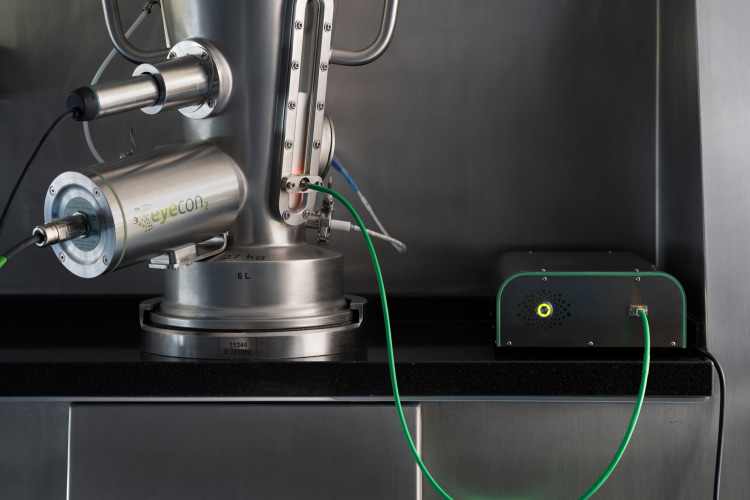Particle size analysis involves measuring and sorting particles by their size and mass to determine the range and distribution of particle sizes included in a sample. Particle size analysis can be applied to many different compounds, including powders, granules, and particles dispersed in fluids.A particle size analyzer is a critical test used for quality control in a variety of industries.
Keep reading to learn more about particle size analyzers and their industry uses, especially in pharmaceuticals, but in a wide variety of other industries as well.
Particle Size Distribution as an Important Quality Control Measure
Particle size analysis measures the particle size distribution (PSD) of a sample. The PSD provides a snapshot of the masses and sizes of each individual particle in a substance.
Any industry that grinds or mills products use’s particle size analysis to determine whether their product reaches its quality and safety standards. Yet, measuring the PSD can be challenging. For one thing, particles are rarely perfectly spherical; as a result, there are fewer assumptions that can be made when analyzing particle size distribution. That’s why pharmaceutical companies, as well as other industries, rely on automated particle size analysis for quality control.

Why Do Pharmaceutical Companies Need Particle Size Analysis?
In the pharmaceutical industry the PSD is a Critical Quality Attribute (CQA). This is because particle size affects all aspects of manufacturability. Measures such as volume, shape, surface area, porosity influence not only the final product quality but every process step in-between to make the final product. The high standards of pharmaceutical quality control require measuring PSD, for the patient’s safety and efficacy. Drugs must reach certain targets of uniformity and dissolution rates. Therefore, particle size measurement is critical for a product behavior profile, for bio-availability, absorption rate and shelf life,” as Sarah Moore writes in AZO Materials.
What Are The Benefits Of Using Real-time Particle Size Analyzers?
Particle size is one of the most essential key quality parameters of a re-granulated product generated on a powder to granule line as it has a direct influence on powder compactibility and porosity. Real-time particle size data is invaluable for both process development and manufacturing. Spatial filtering velocimetry (SFV) and dynamic image analysis (DIA) are used to perform in-line particle size analysis of granulation operations. A key advantage of DIA is that it also provides information regarding particle shape, which is essential when dealing with oddly formed particles or objects. The fundamental problem of in-line DIA is to avoid particle overlapping in pictures, which would otherwise misrepresent measurement data. In this article, we examine the utility of at-line particle analysis in the context of direct image analysis and provide the top advantages of the method.
Lower Energy Consumption
At-line particle analysis is commonly used to reduce energy consumption, notably in milling operations. Milling is an energy-guzzling process, with energy consumption spiking exponentially as target particle size decreases. Irrespective of the control being automatic or manual, real-time particle size analysis ensures tighter mill control. The influence on operational decisions is immediate. The increase in operational confidence is such that the safety buffer offered by aiming for a very tight specification is no longer required. This helps to reduce energy use. Check out our paper on the use of real-time at-line particle size measurement on a pelletization process for accurate end-point prediction to learn more about the benefits of at-line particle analysis!
Using Automated Control
A suitable data stream is necessary for automated control in all production sectors. Because the particle size is a performance-defining factor for many particulate goods, ranging from pharmaceuticals to metal powders, automated control based on real-time particle size measurement is the logical next step. Inline and online systems can measure four particle size distributions per second and track processes very quickly. Further, new software has become available that simplifies the integration of many analyzers to enable multivariate process control.
Improved Process Design
The ability to navigate the design space efficiently boosts the experimental production process. Real-time measurement enhances knowledge acquisition while saving time and money. In addition, early diagnosis and resolution of processing faults reduce the cost and time required for commercialization. It contributes to the faster creation of better procedures.
Risk Reduction
With online measurement, the health and safety concerns associated with manual analysis are avoided, and the possibility of erroneous data is reduced. Work-up and sample extraction can be hazardous to one's health and safety, especially if the process components are poisonous or volatile. A completely automated online system, on the other hand, eliminates the risk.
Troubleshooting with Intelligence
The success of troubleshooting is dependent, at least in part, on the quality of the hints. Comparing periodic offline analysis to real-time monitoring is analogous to comparing a video to snapshots. With continual particle count monitoring, it is feasible to observe the outcome of any activity, intended or unintended, as it occurs or has occurred. This is extremely useful when determining the root cause of an issue and evaluating viable solutions.
What Is the Difference Between Real-time and Offline Particle Size Analysis?
Offline particle size analysis is often performed on an hourly basis (at most). As a result, any disruptions may not be recognized for an hour at most, and responding to disruptions may take considerably longer - time enough to compromise a batch. Upsets can be discovered instantly using real-time analysis. Offline analysis can be time-intensive when examining process factors and their impacts. Real-time particle size analysis allows you to examine these scenarios in minutes rather than hours. Causal relationships emerge at a considerably faster rate than usual.
What Other Industries Use Particle Size Analysis?
Particle size analysis is not only used to ensure high quality of the final product in industries, including food, agriculture, cosmetics, ceramics, building materials, paint, mining, and forestry, but also to control the PSD of the product as it is been manufactured.

Aerosol Industry
The aerosol industry, for example in the production of asthma inhalers, particle size is of huge importance, because it determines the dispersive properties of the aerosol. Particle size analysis allows manufacturers of asthma inhalers to deliver the medication into the lungs of the inhaler user effectively and efficiently.
Paint & Ink Industry
Paints and coatings regularly undergo particle size analysis to ensure that the pigment is dispersed uniformly in the paint ink. The PSD will affect the optical properties that determine the quality of the final finish seen of a painted product. These properties can include opacity, weather resistance, and undertone, to name a few. Particle size analysis is also used for the effective manufacturing of ink. The particle size of the pigment particles within ink influences the quality of the final product such as it’s colour strength and durability, so gaining insight into the fundamental properties of ink through particle analysis help’s manufacturers create higher quality product.
Food & Drink Industry
In the food and drink industry, particle size analysis is used to check the quality control of products such as coffee, chocolate, and flour, who’s storage and stability rely on particle size. Without particle size control, powdered products can cake, dispersions such as milk can have stability issues and spoil all leading to waste. For this industry particle size also has bearing on the taste of the food and drink product.
Forestry & Mining Industry
In forestry and mining, particle size analysis can be used to characterize different soils or minerals. Doing so can help identify any impurities found in extracted minerals or metals that can affect the end product’s performance.
Cosmetics Industry
Particle size analysis is similarly used in the cosmetics industry to examine formulation, identify raw materials, and perform quality control. With particle size analysis, cosmetic manufacturers can ensure that products have the desired properties, such as pigmentation, opacity, and so on.
How Does Particle Size Analysis Work?
Particle size analyzers are used in many industries, including the pharmaceutical industry, for quality control and product testing.
In the pharmaceutical industry, four common methods to ascertain particle size are sieve analysis, laser diffraction, dynamic light scattering, and direct imaging techniques.

Learn More About Real-time Particle Size Analysis Today
The Eyecon2 is a direct imaging particle size analyzer. It can be used both on powders and bulk solids to rapidly understand particle size, shape, and variation.
The Eyecon2 uses imaging to measure bulk wet and dry powders and calculates PSDs on the level of individual particles. The captured images are passed through an algorithm which can identify and measure particle size distributions.
With Eyecon2, analysis is efficient and automatic, which reduces time and production cost and also minimizes workers’ exposure to hazardous materials.
Find out more about Innopharma Technology’s Eyecon2 particle size analyzer and talk to a member of our team today!